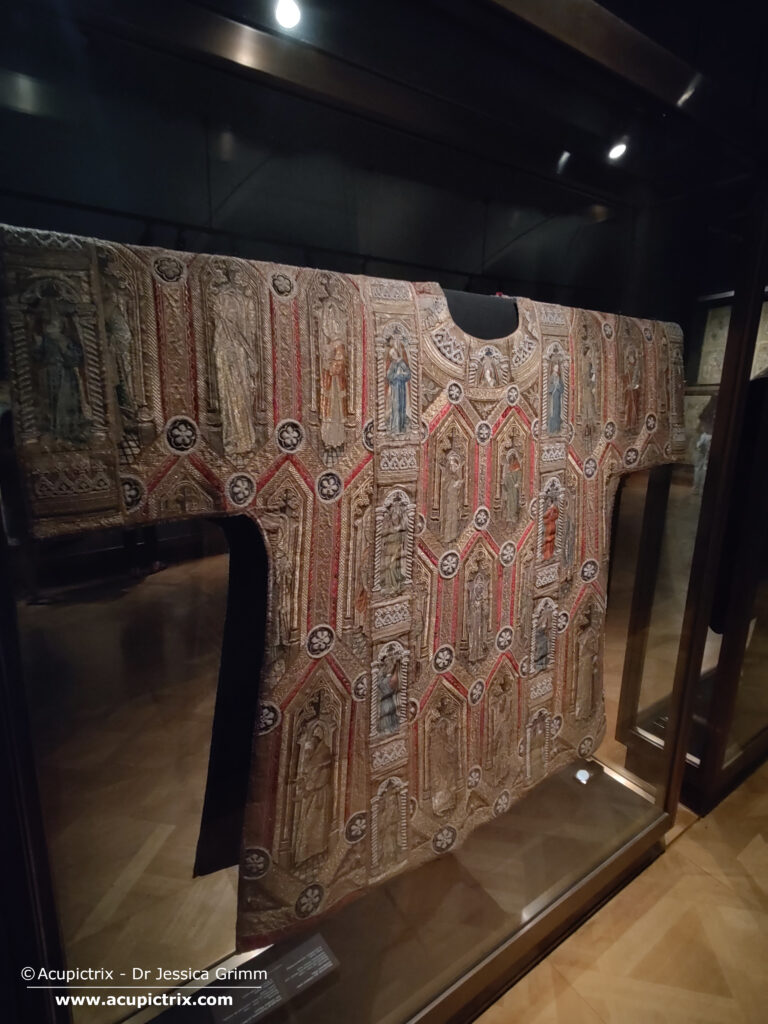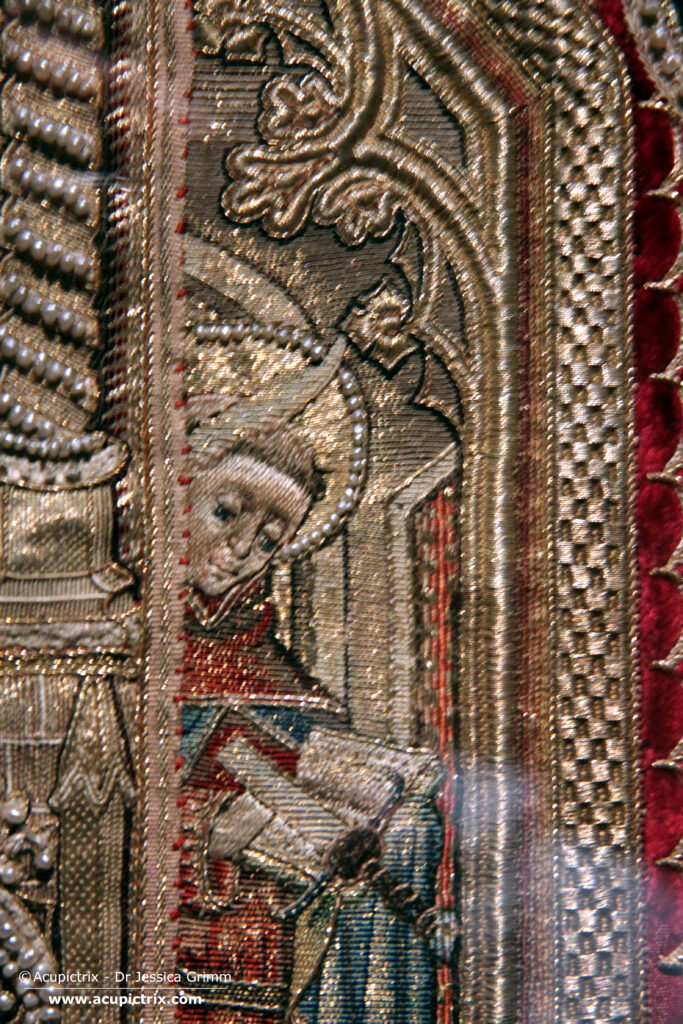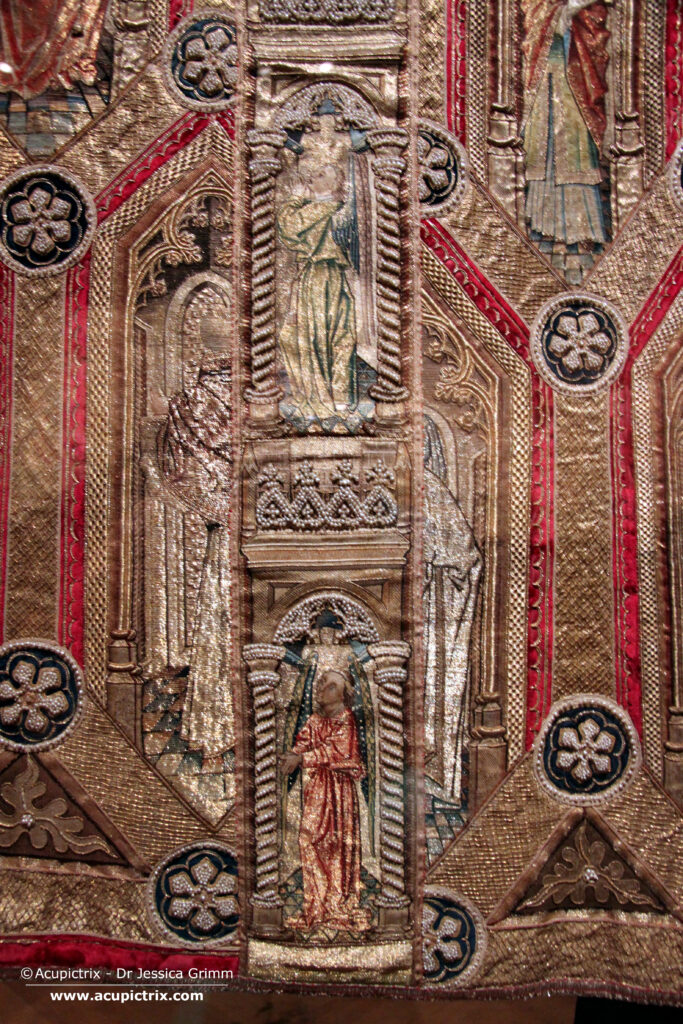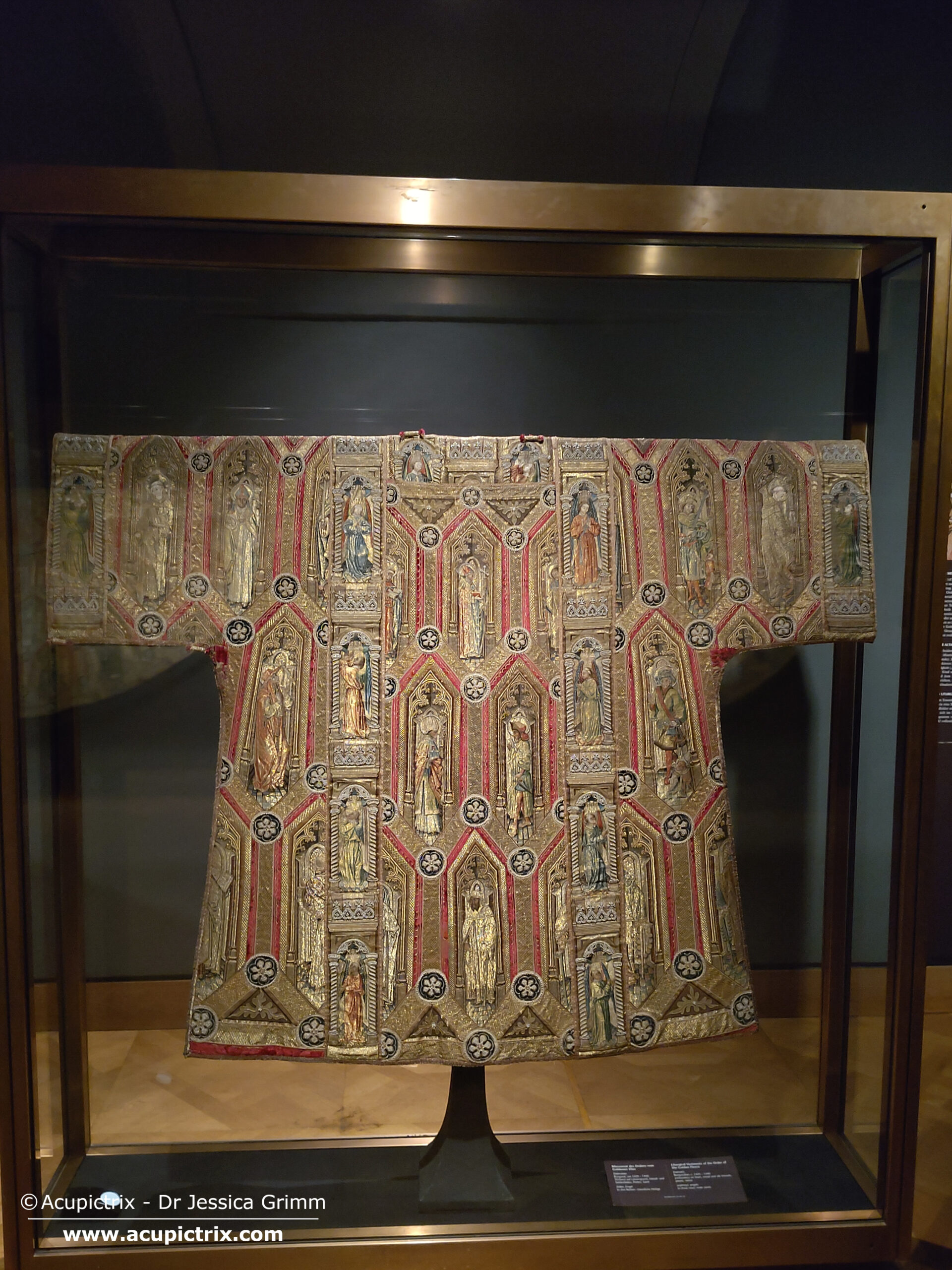Your basket is currently empty!
This past month, we have examined the magnificently embroidered vestments of the Order of the Golden Fleece, exhibited at the Imperial Treasury in Vienna. On this blog, you can find an article providing a general overview of the literature, as well as articles on the antependia, the three copes, and the chasuble. To conclude the series, this week, we will examine the dalmatic (worn by the deacon) and the tunicella (worn by the subdeacon). Construction-wise, these are the most puzzling vestments of the set. Let’s have a closer look!


The figures embroidered on the dalmatic are male saints. On the front: Honoratus of Armiens, Exuperantius, Winibald, Alexius of Rome, Dominic de la Calzada, James the Great, and William of Gellone can be identified. And on the back are: Saint Fiacre, Donatian of Reims, Martin of Tours, Bernhard of Clairvaux, Saint Jerome, Saint Eustace, and Hubert of Liege. The tunicella features female saints on the front, including Amalberga of Temse, Juliana of Nicomedia, Judith, Saint Zita, Agatha of Sicily, Saint Beatrix, and Genevieve of Brabant. And on the back: Apollonia, Martha, Dymphna, Wilgefortis, Blandina, Cecilia, Agnes, Dorothea, and Ottilia.
As with the other embroidered vestments of the Order of the Golden Fleece, the dalmatic and the tunicella give the illusion that they are made from an expensive, all-over embroidered fabric on which even more embroidery is being applied. We see the same hexagonal orphrey panels patchworked together to form this fabric. Additional orphreys filled with angels are placed on top.

The embroidery techniques and their use are the same as those we have seen before in the other vestments. However, what is truly intriguing is how the dalmatic and tunicella have been pieced together. We have already seen that there are cut orphrey panels in all the other vestments, too, but not at the scale seen in the dalmatic and the tunicella. There are so many half-figures peeping from underneath the orphreys with the angels. Do they continue underneath the angel orphrey? There’s no real need for them to do so.

The above weird misalignment indicates that the orphrey panels do not extend far underneath the angel orphrey. Does this mean that orphrey panels were routinely cut in half to make up the vestments? That’s pretty insane! Or were they never whole to begin with, and is it all just an embroidered illusion? To answer this question, one would need to gather detailed pictures of each cut orphrey panel and sort them according to their size (remember: there are three tiers or bands that this ‘fabric’ is made up of). And then the puzzling can begin. At some point, I might give it a try.
Literature
Schlosser, J. von, 1912. Der burgundischen Paramentenschatz des Ordens vom goldenen Vliesse. Anton Schroll & Co., Wien.
2 responses to “Order of the Golden Fleece: Dalmatic and Tunicella”
-
I see lots of gold and silk and pearls, but no silver. Did you see any silver threads (even if heavily tarnished)?
-
Yes, some details have a small amount of silver thread.
-


Leave a Reply